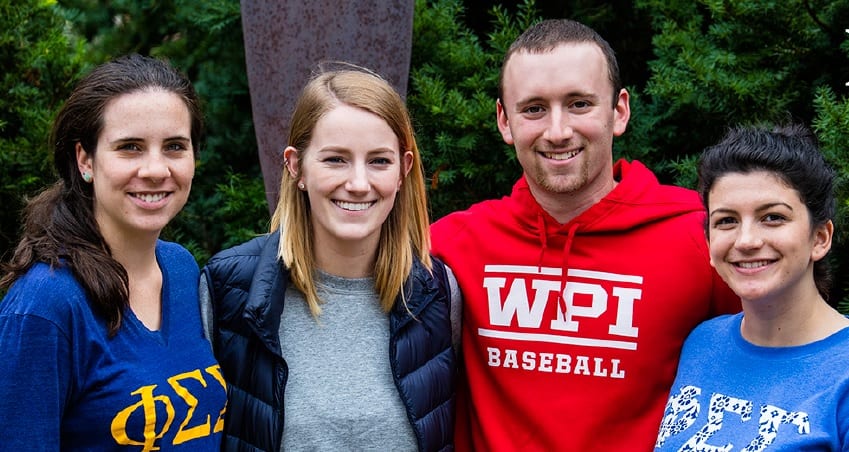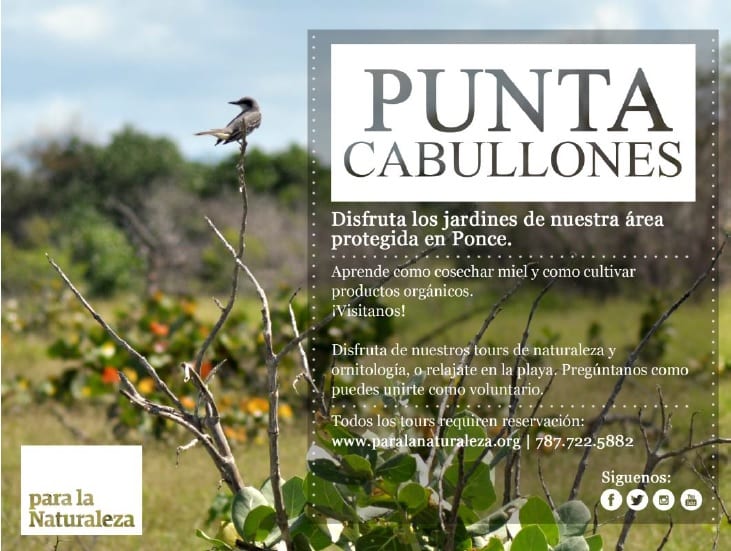Developing Community-Based Management Approaches for the Punta Cabullones Natural Area
 Sponsoring organization: Para la Naturaleza
Sponsoring organization: Para la Naturaleza
Team members: Dan Bettigole (Electrical and Computer Engineering ’17), Emma Healey (Mechanical Engineering ’17), Kimberly Marrion (Architectural Engineering ’17), and Anna Wortman (Biology and Biotechnology ’17)
Executive Summary: Puerto Rico is facing an economic crisis with a crippling $72 billion debt and a 12% unemployment rate (As Puerto Rican Economic Crisis Deepens, Supporters of Statehood See Opportunity, 2015). Due to these dire circumstances, many Puerto Ricans are choosing to leave the island in search of new opportunities elsewhere (Cohn, Patten, & Lopez, 2014). In addition to the deteriorating economy, the environment has been suffering as well, with only 8% of its land currently conserved, compared to upwards of 50% on surrounding islands (Para la Naturaleza, n.d.).
Ponce, the second largest city in Puerto Rico, is no exception to the suffering economy with over half of the inhabitants below the poverty line and a staggering 14.4% unemployed. Within the municipality of Ponce, a sensitive ecological area, Punta Cabullones, has been recently acquired by our sponsor, Para la Naturaleza (PLN). Ideally, Punta Cabullones will provide economic income for the surrounding community of Vallas Torres through a community garden and a beekeeping initiative while also conserving and protecting the fragile ecosystems. However, the land is currently unutilized, and the local community does not have the necessary knowledge to preserve it.
We developed a plan for community-based management and tourism in the Punta Cabullones area. The goals of our plan are to:
- Create economic input
- Create community involvement in the conservation efforts led by PLN
- Educate locals and tourists about the significance of the unique ecosystems
- Conserve the natural environment of Punta Cabullones
- Promote ecotourism
Methodology
In order to develop a successful community-based management and tourism plan, we did the following:
- Gained an understanding of the geography of the land
- Determined a potential plan for the use of the area
- Determined the cost of our plan and potential revenue for the local community
- Evaluated how our plan will impact the surrounding area
- Developed an educational program for locals and visitors
The methods utilized to achieve these objectives consisted of developing an area layout through Geographic Information Systems (GIS) surveying, GPS mapping, and geographical observation. We also determined the best options for community participation through research, analyzing the societal effects on the community through communications with our sponsor, and creating an educational program using knowledge gained during site visits.
In order to develop a plan for Punta Cabullones, we needed a clear understanding of the geography of the area. GIS surveying and first-hand observation of the land gave us the insight we needed to determine where to place gardens, trails, a visitors’ center, and other facilities.
Next, to incorporate community involvement, we researched the best ways for the people of Vallas Torres to not only engage in the development of Punta Cabullones, but also improve their economic standing. Based on our research and our site visits, we found that utilizing community gardens and beekeeping for honey production would accomplish both of these goals. Therefore, we employed literature review, interview, and cost analysis methods in order to accurately articulate the best way for PLN to operationalize our proposal recommendations.
Finally, according to the information provided to us by PLN’s Elsie Aponte Florenciani, we determined that the community needs educational outreach regarding conservation. Through our visits at other PLN sites, we gained knowledge regarding typical educational programming, signage, and tours.
Findings and Recommendations
Finding #1 – Vallas Torres is a discouraged, impoverished, and unmotivated community in need of unity, income, and responsibility.
Through our correspondence with Ms. Aponte, we learned that the majority of the community is unemployed, the youth are bored, and the neighborhood lacks proper access to transportation, garbage disposal, and recreational areas. The people of Vallas Torres are looking to “be united as a community” and obtain a source of employment and income (Florenciani, 2015).
Recommendation: We recommend creating a community-based management plan for the Punta Cabullones site that includes a community garden, beekeeping initiative, and tourism.
Finding #2 – A community garden will be an impactful form of community-based management to generate income and give families a stake in the community.
Based on our site visit to Hacienda la Esperanza, we are confident a community garden can be implemented and flourish in Puerto Rico’s climate. We calculated that giving each household 128 square feet of gardening space has the potential to generate an average of $360 of crops per year. Through our research we have found a substantial list of crops that are known to successfully grow in this area (Table 2.1).
Recommendation: We propose providing each of the 53 families with four 4’x8’ plots in the community garden for a total of 212 plots. Additionally, we recommend placing a community orchard adjacent to the community garden.
Finding #3 – Proper management and nectar sources will ensure that a beekeeping initiative will be another successful form of community-based management.
Through contact with one of Puerto Rico’s major beekeeping corporations, we learned that Perone hives best mimic the natural nesting behavior and minimize beekeepers’ interaction with Apis mellifera scutellata, the most efficient honeybee species. Full bee suits and ample amounts of smoke are necessary in order to protect those working with the bees. In order to provide the bees with suitable flowers for foraging, we created a list of potential flowers to be planted in a pollinator garden.
Recommendation: The Apis mellifera scutellata honeybee, Perone hives, and proper management techniques should be implemented for successful honey production. In addition, example flowers for the pollinator garden include the common sunflower, Mexican marigolds, billygoat weed, and more may be found in Table 5.1.
Finding #4 – In order to reduce the boredom of the youth, we determined that soccer and volleyball nets are cost-effective activities that could be implemented in a recreational area.
Research and analysis of various outdoor activities to alleviate the youth’s boredom found that soccer goals would cost around $100-$150, and a volleyball net would cost $250. Comparatively, a basketball court would cost upwards of $4,000 and playground equipment would cost $5,000-$15,000.
Recommendation: We suggest providing soccer and volleyball nets initially in the recreational area and potentially purchasing playground equipment with further development of Punta Cabullones.
Finding #5 – We determined the materials and locations of the trails at the Punta Cabullones site.
Through our site visits and research, we analyzed various types of materials commonly used in trails. Using GIS, GPS, and observation of our site, we designed the trail map and area layout.
Recommendation: We recommend a trail design, including gravel and boardwalk trails, as seen in Figure 5.2 and an area layout as seen in Figure 5.1.
Finding #6 – The existing Don Q Kiosk needs to be restored to its original state.
Based on the information provided by PLN and our site visit, we were able to analyze the existing site design and create a 3D CAD model of the building. Once this model was created, we used our experiences at other PLN sites to redesign the interior layout while maintaining the historical significance.
Recommendation: We propose that the Don Q Kiosk is restored and repurposed as a visitors’ center for the Punta Cabullones site as seen in Figure 5.3 and Figure 5.4.
Finding #7 – Educational programming is one method in which PLN promotes conservational awareness and environmental learning.
Through our tours at other site visits, we determined that tours, open houses, and workshops are common ways of getting visitors involved while teaching them the importance of protecting natural ecosystems.
Recommendation: We recommend implementing educational programming such as guided tours, workshops, and open houses as advertised in Figure 5.5. We designed potential educational signage as seen in Appendix G.


